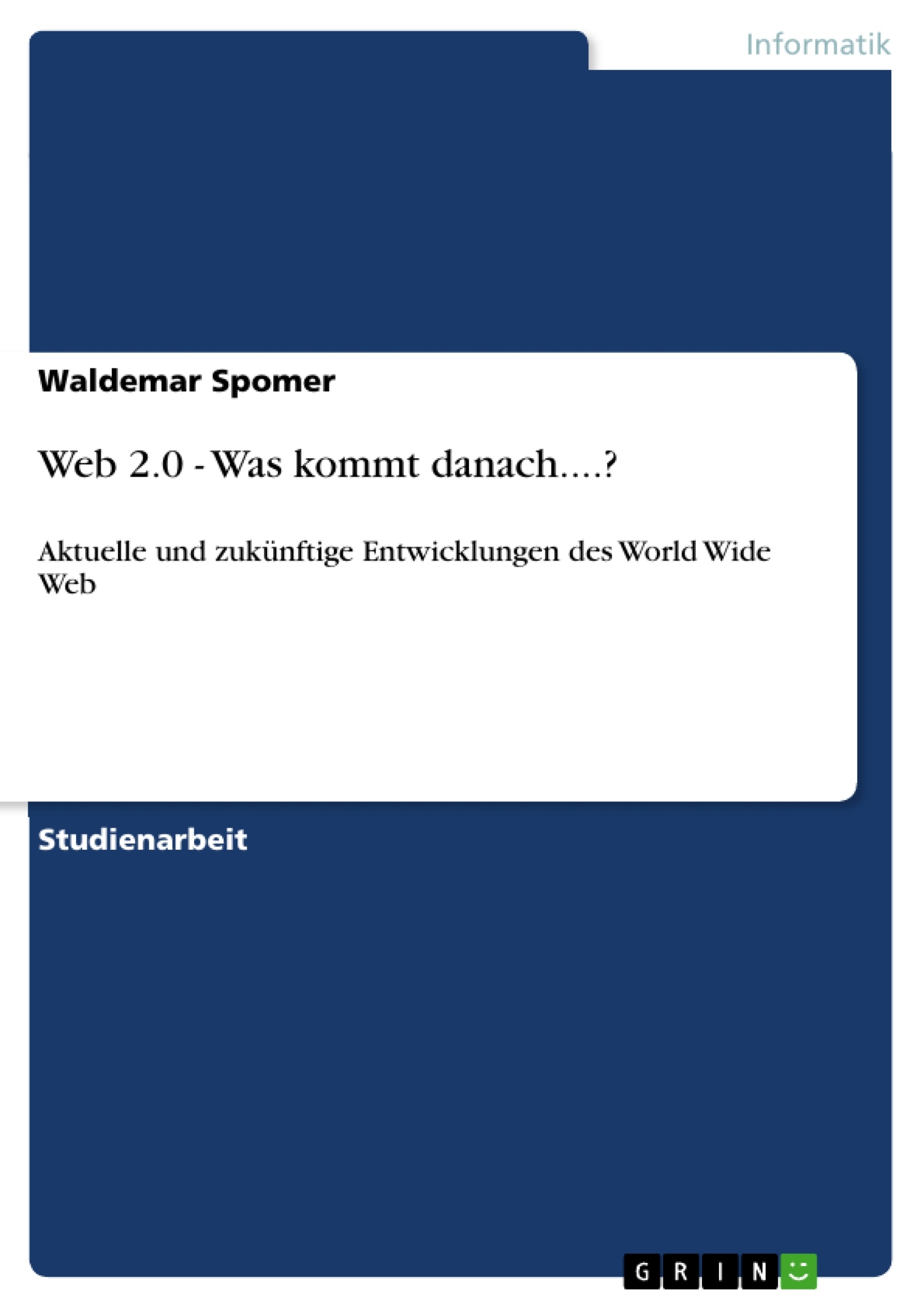Kurzfassung
Gegenstand der vorliegenden Arbeit ist die zukünftige Entwicklung des World Wide Web. Das bestehende Web 2.0 ist durch soziale Interaktion und Software begründet und ist in den letzten Jahren durch User-Generated-Content und die kollektive Intelligenz zu einer dynamischen Destination für Wissensgenerierung und Interaktivität geworden. Doch das Information Retrieval und die applikationsübergreifende Weitergabe von Daten und Information gestalten sich dennoch sehr umständlich. Abhilfe schaffen hier semantische Technologien, wie Ontologien und Regelsysteme, die applikationsübergreifend sicherstellen, dass die Inhalte mit Bedeutung versehen und maschineninterpretierbar werden. Dadurch ergeben sich viele Vorteile für die Benutzung des Webs in der Zukunft, wie schnelleres Auffinden von Information und leichteres Erkennen von Zusammenhängen im dargestellten Wissensgebiet.
Schlagwörter: Web 2.0, Web 3.0, Semantische Technologien, Social Semantic Web, Information Retrieval, Ontologien, Entwicklung des Webs
Abstract
The present work focuses on the future development of the World Wide Web. The existing Web 2.0 is motivated by social interaction and social software and has become a dynamic destination, in the recent years, for knowledge generation and interactivity due to User-Generated-Content and the Collective Intelligence. But information retrieval and cross-sharing of data and information, nevertheless, turns out very awkward. Semantic technologies such as ontologies and control systems promise to improve this situation. They ensure that the contents are machinereadable and provided with the indicated meaning. Many advantages arise from these developments for the use of the web in the future. Information will be found faster and easier and the detection of relationships in the represented knowledge fields will be made possible.
Keywords: Web 2.0, Web 3.0, semantic technologies, Social Semantic Web, infor-mation retrieval, ontologies, development of the Web
Inhaltsverzeichnis
- Wo steht das World Wide Web?
- Wohin geht es mit dem World Wide Web?
- Aufbau und Ziele der Arbeit
- Web 2.0 Wie kam es zu Stande und wie ist es beschaffen?
- Vom Web 1.0 zum Web 2.0
- Anwendungen des Web 2.0
- Weblogs
- Wikis
- Suchmaschinen – die Suche im Internet
- Technologien des Web 2.0.
- Ajax als Technologiekonzept für Rich Internet Applications
- Adobe Flash/Flex
- RSS
- Folksonomien
- Content Syndication und Content Aggregation
- Web-Services und Mashups
- Entwicklungsszenarien des Web 2.0.
- Technische Entwicklungen
- Soziale Entwicklungen
- Konvergenz des Social Web mit dem Semantic Web
- Technische Grundlagen des Semantic Web
- Vom Social Web zum Social Semantic Web
- Semantic Web Technologien und Anwendungsszenarien
- Anreicherung von Webinhalten mit Semantik durch RDFa und Microformats
- Semantische Suche
- Visualisierung von Informationen aus Weblogs
- Semantisches Wiki
- Conclusio und Ausblick
Zielsetzung und Themenschwerpunkte
Die vorliegende Arbeit befasst sich mit der zukünftigen Entwicklung des World Wide Web. Dabei werden die aktuellen Entwicklungen des Web 2.0 analysiert und die Möglichkeiten des Semantic Web als potentielle Weiterentwicklung diskutiert.
- Die Entstehung und Entwicklung des Web 2.0
- Die Rolle von sozialen Interaktionen und Software im Web 2.0
- Die Bedeutung von User-Generated-Content und kollektiver Intelligenz
- Die Herausforderungen des Information Retrieval und der Datenübertragung im Web 2.0
- Die Anwendung von semantischen Technologien wie Ontologien und Regelsystemen
Zusammenfassung der Kapitel
Das erste Kapitel beleuchtet die aktuelle Situation des World Wide Web und zeigt die Herausforderungen, die sich in der digitalen Welt stellen. Im zweiten Kapitel wird das Web 2.0 genauer betrachtet, wobei seine Entstehung, seine wichtigsten Anwendungen und zugrundeliegenden Technologien erläutert werden. Das dritte Kapitel analysiert die Entwicklungsszenarien des Web 2.0, sowohl aus technischer als auch aus sozialer Sicht. Der vierte Teil der Arbeit untersucht die Konvergenz des Social Web mit dem Semantic Web und legt die technischen Grundlagen des Semantic Web dar. Im fünften Kapitel werden schließlich konkrete Anwendungsbeispiele für semantische Technologien im Web vorgestellt, wie zum Beispiel die Anreicherung von Webinhalten mit Semantik durch RDFa und Microformats, semantische Suche und die Visualisierung von Informationen aus Weblogs.
Schlüsselwörter
Die Arbeit konzentriert sich auf die Schlüsselbegriffe Web 2.0, Web 3.0, semantische Technologien, Social Semantic Web, Information Retrieval, Ontologien und Entwicklung des Webs. Diese Begriffe bilden den Rahmen für die Analyse der aktuellen und zukünftigen Entwicklung des World Wide Web und zeigen die Bedeutung von semantischen Technologien für die Gestaltung des digitalen Raumes.
- Quote paper
- Waldemar Spomer (Author), 2010, Web 2.0 - Was kommt danach....?, Munich, GRIN Verlag, https://www.hausarbeiten.de/document/164144


